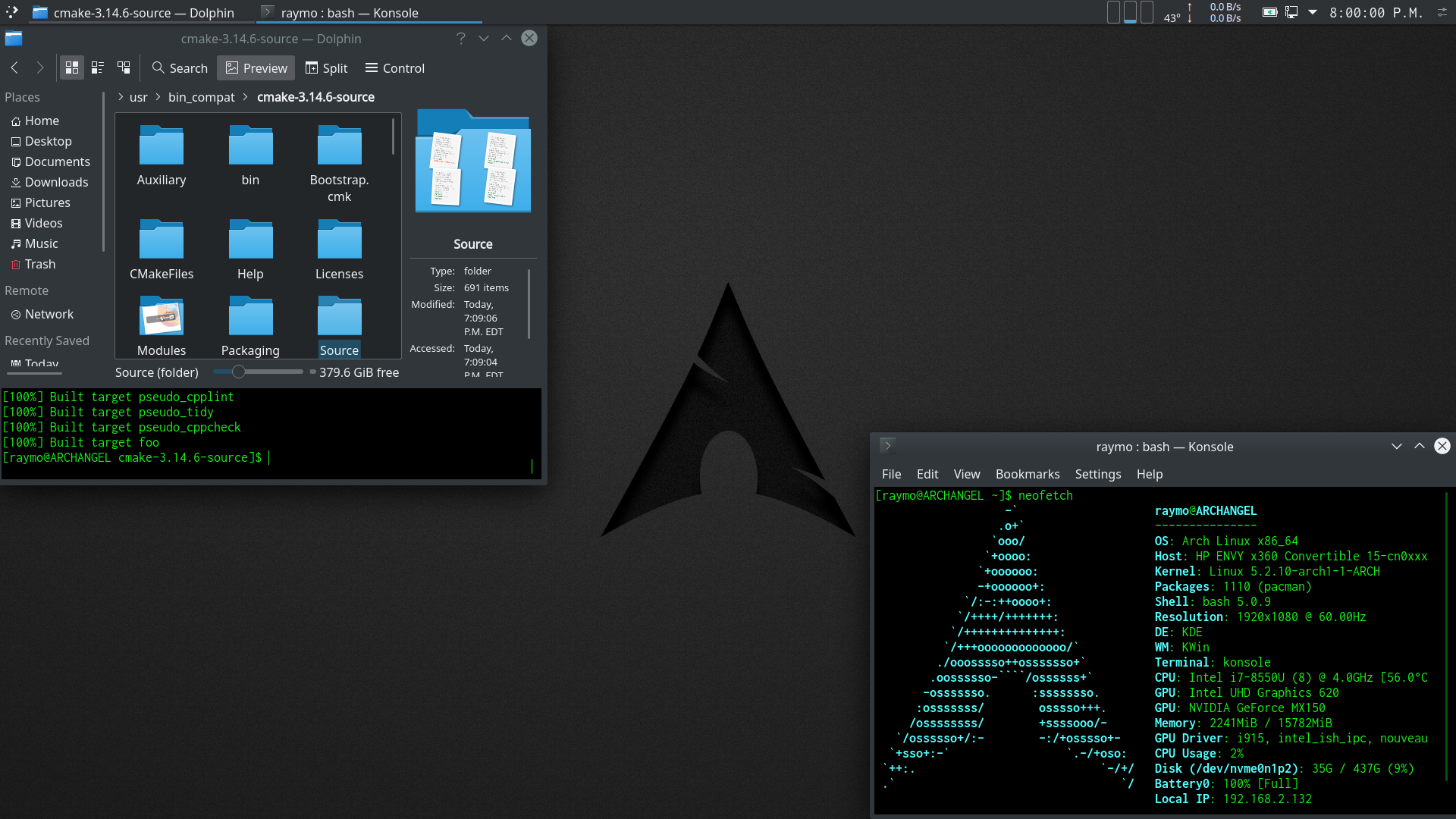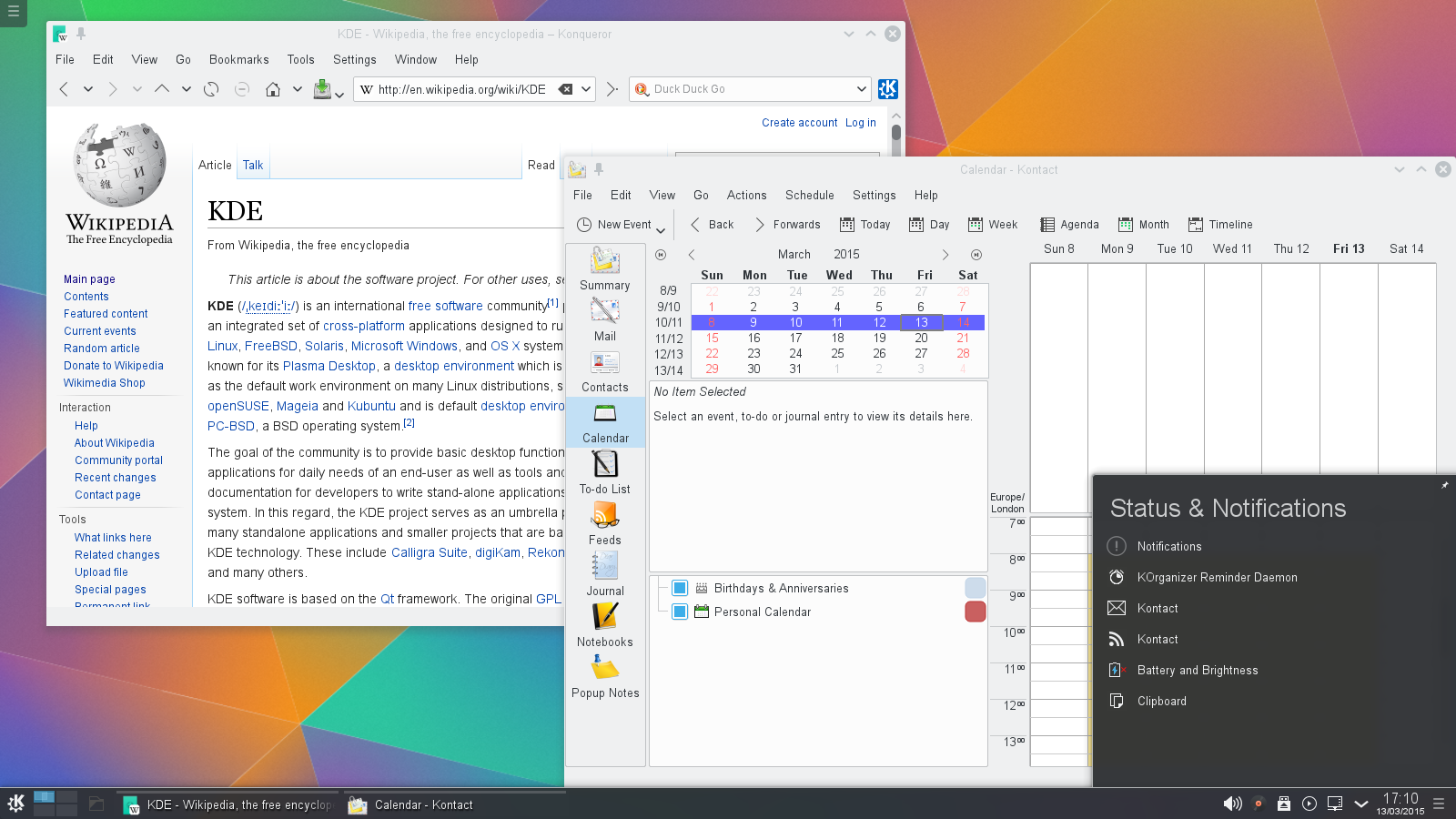|
Kdenlive
Kdenlive (; acronym for ''KDE Non-Linear Video Editor'') is a free and open-source video editing software based on the MLT Framework, KDE and Qt. The project was started by Jason Wood in 2002, and is now part of the official KDE Projects suite. The software is maintained by a team of developers. Kdenlive can be used for professional video editing due to its advanced features and wide range of formats. Kdenlive is freely available on FreeBSD, MacOS, Microsoft Windows, and on Linux. The software is distributed under the GNU Public License-3.0, while parts of the source code are available under different licenses such as GPL-2.0-or-later and GPL-3.0-or-later. History The project was initially started by Jason Wood in 2002. The development of Kdenlive moved on from the K Desktop Environment 3 version (which wasn't originally made for MLT) to KDE Platform 4, with an almost complete rewrite. This was completed with Kdenlive 0.7, released on 12 November 2008. Kdenlive 0.9.1 ... [...More Info...] [...Related Items...] OR: [Wikipedia] [Google] [Baidu] |
Video Editing Software
Video editing software or a video editor is software used for performing the post-production video editing of digital video sequences on a non-linear editing system (NLE). It has replaced traditional flatbed celluloid film editing tools and analog video tape editing machines. Video editing software serves a lot of purposes, such as filmmaking, audio commentary, and general editing of video content. In NLE software, the user manipulates sections of video, images, and audio on a sequence. These clips can be trimmed, cut, and manipulated in many different ways. When editing is finished, the user exports the sequence as a video file. Components Timeline NLE software is typically based on a timeline interface where sections moving image video recordings, known as clips, are laid out in sequence and played back. The NLE offers a range of tools for trimming, splicing, cutting, and arranging clips across the timeline. Another kind of clip is a text clip, used to add text to a video ... [...More Info...] [...Related Items...] OR: [Wikipedia] [Google] [Baidu] |
KDE Applications 5
The KDE Gear is a set of applications and supporting libraries that are developed by the KDE community, primarily used on Linux-based operating systems but mostly multiplatform, and released on a common release schedule. The bundle is composed of over 200 applications. Examples of prominent applications in the bundle include the file manager Dolphin, document viewer Okular, text editor Kate, archiving tool Ark and terminal emulator Konsole. Previously the KDE Applications Bundle was part of the KDE Software Compilation. Extragear Software that is not part of the official KDE Applications bundle can be found in the "Extragear" section. They release on their own schedule and feature their own versioning numbers. There are many standalone applications like Krita or Amarok that are mostly designed to be portable between operating systems and deployable independent of a particular workspace or desktop environment. Some brands consist of multiple applications, such as Callig ... [...More Info...] [...Related Items...] OR: [Wikipedia] [Google] [Baidu] |
Frei0r
frei0r is a simple cross-platform framework for video effects. It provides filters, mixers and generators by means of minimalistic plugin API. The behaviour of the effects can be controlled from the host through simple parameters. The intent is to solve the recurring reimplementation or adaptation issue of standard video effects. Frei0r is not meant as a generic API for all kinds of video applications. There is no support for the requirements of special application areas like non-linear editors (NLE), hardware accelerated shader effects, or high precision video processing. What frei0r does provide, besides a collection of usable video plugins, are C and C++ code reference implementations for over 100 different video manipulation algorithms, licensed under the GNU General Public License. The frei0r API is not meant to be a competing standard to more ambitious efforts. The current implementation of frei0r is very lightweight, consisting of just a single C/C++ header file. Since i ... [...More Info...] [...Related Items...] OR: [Wikipedia] [Google] [Baidu] |
KDE Projects
KDE Projects are projects maintained by the KDE, KDE community, a group of people developing and advocating free software for everyday use, for example KDE Plasma 5, KDE Plasma and KDE Frameworks or applications such as Amarok (software), Amarok, Krita or Digikam. There are also non-coding projects like designing the Breeze desktop theme and iconset, which is coordinated by KDE's Visual Design Group. Even non-Qt applications like GCompris, which started as a GTK-based application, or web-based projects like WikiToLearn are officially part of KDE. KDE uses Konqui, a Chinese dragon as their mascot. Overview As of today there are many KDE projects that are either stand-alone or grouped into larger sub-projects: * KDE Plasma 5, KDE Plasma Workspaces * KDE Frameworks (formerly KDELibs, KDE-Libs): A collection of library (computer science), libraries that provides Software framework, frameworks and functionality for Software developer, developers * KDE Applications, KDE Applications ... [...More Info...] [...Related Items...] OR: [Wikipedia] [Google] [Baidu] |
Media Lovin' Toolkit
Media Lovin' Toolkit (MLT) is an open source software multimedia framework, designed and developed for television broadcasting. It provides a toolkit for broadcasters, video editors, media players, transcoders, web streamers and many more types of applications. The functionality of the system is provided via an assortment of ready to use tools, XML authoring components, and an extensible plug-in based API. It is used by video editors Kdenlive and Shotcut among others. Technical overview MLT provides an API with minimal dependencies (POSIX and C99). The design is modular allowing for the addition of new components and making integration simple with other multimedia libraries and applications. Support is available for the authoring and manipulation of time-based media including playlists, multiple tracks, filters, and transitions using DOM. High-level language bindings exist for C++, Java, Lua, Perl, PHP, Python, Ruby, and Tcl. MLT takes advantage of multi-core processors a ... [...More Info...] [...Related Items...] OR: [Wikipedia] [Google] [Baidu] |
Non-linear Editing System
Non-linear editing (NLE) is a form of offline editing for audio, video, and image editing. In offline editing, the original content is not modified in the course of editing. In non-linear editing, edits are specified and modified by specialized software. A pointer-based playlist, effectively an edit decision list (EDL), for video and audio, or a directed acyclic graph for still images, is used to keep track of edits. Each time the edited audio, video, or image is rendered, played back, or accessed, it is reconstructed from the original source and the specified editing steps. Although this process is more computationally intensive than directly modifying the original content, changing the edits themselves can be almost instantaneous, and it prevents further generation loss as the audio, video, or image is edited. A non-linear editing system is a video editing (NLVE) program or application, or an audio editing (NLAE) digital audio workstation (DAW) system. These perform non ... [...More Info...] [...Related Items...] OR: [Wikipedia] [Google] [Baidu] |
Libav
FFmpeg is a free and open-source software project consisting of a suite of libraries and programs for handling video, audio, and other multimedia files and streams. At its core is the command-line ffmpeg tool itself, designed for processing video and audio files. It is widely used for format transcoding, basic editing (trimming and concatenation), video scaling, video post-production effects, and standards compliance (SMPTE, ITU). FFmpeg also includes other tools: ffplay, a simple media player, and ffprobe, a command-line tool to display media information. Among included libraries are libavcodec, an audio/video codec library used by many commercial and free software products, libavformat (Lavf), an audio/video container mux and demux library, and libavfilter, a library for enhancing and editing filters through a GStreamer-like filtergraph. FFmpeg is part of the workflow of many other software projects, and its libraries are a core part of software media players such as VLC, an ... [...More Info...] [...Related Items...] OR: [Wikipedia] [Google] [Baidu] |
FFmpeg
FFmpeg is a free and open-source software project consisting of a suite of libraries and programs for handling video, audio, and other multimedia files and streams. At its core is the command-line ffmpeg tool itself, designed for processing video and audio files. It is widely used for format transcoding, basic editing (trimming and concatenation), video scaling, video post-production effects, and standards compliance ( SMPTE, ITU). FFmpeg also includes other tools: ffplay, a simple media player, and ffprobe, a command-line tool to display media information. Among included libraries are libavcodec, an audio/video codec library used by many commercial and free software products, libavformat (Lavf), an audio/video container mux and demux library, and libavfilter, a library for enhancing and editing filters through a GStreamer-like filtergraph. FFmpeg is part of the workflow of many other software projects, and its libraries are a core part of software media players such as V ... [...More Info...] [...Related Items...] OR: [Wikipedia] [Google] [Baidu] |
QuickTime
QuickTime (or QuickTime Player) is an extensible multimedia architecture created by Apple, which supports playing, streaming, encoding, and transcoding a variety of digital media formats. The term ''QuickTime'' also refers to the QuickTime Player front-end media player application, which is built-into macOS, and was formerly available for Windows. QuickTime was created in 1991, when the concept of playing digital video directly on computers was "groundbreaking." QuickTime could embed a number of advanced media types, including panoramic images (called QuickTime VR) and Adobe Flash. Over the 1990s, QuickTime became a dominant standard for digital multimedia, as it was integrated into many websites, applications, and video games, and adopted by professional filmmakers. The QuickTime File Format became the basis for the MPEG-4 standard. During its heyday, QuickTime was notably used to create the innovative ''Myst'' and '' Xplora1'' video games, and to exclusively distribute mo ... [...More Info...] [...Related Items...] OR: [Wikipedia] [Google] [Baidu] |



